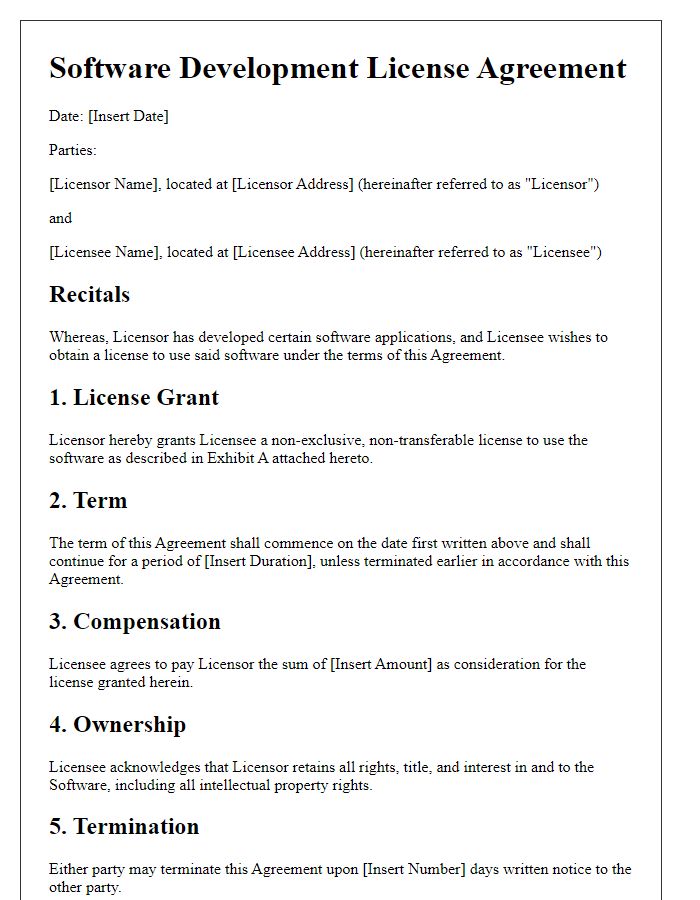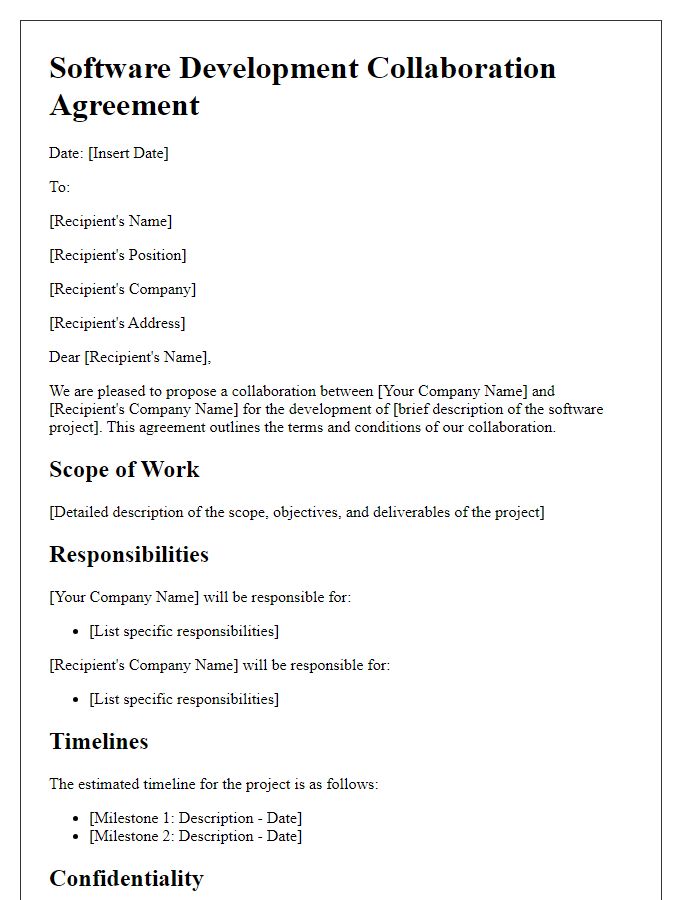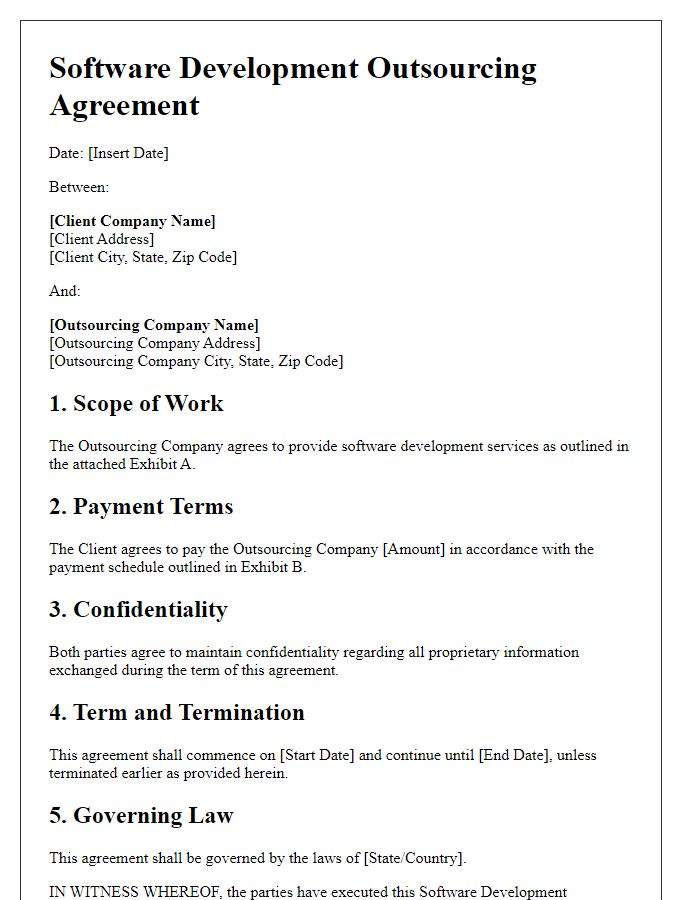Are you in the process of drafting a software development agreement but unsure where to start? Creating a solid framework for your partnership is essential to ensure clear expectations and effective collaboration. In this article, we'll explore key components to include in your agreement, such as project scope, timelines, and payment terms, making it easy for you to craft your own. So, let's dive in and simplify the process together!

Introduction and Parties Involved
In the realm of software development, the Software Development Agreement serves as a foundational contract delineating the relationship between the parties involved. This agreement typically includes entities such as the Client (the business or person requesting software services) and the Developer (the individual or company providing software development expertise). The introduction section often outlines the intent to collaborate on project specifications, timelines, and deliverables critical for successful software deployment. Notably, established milestones and payment terms are also articulated to ensure accountability throughout the software development lifecycle, allowing both parties to maintain clear communication and mutual expectations.
Scope of Work and Deliverables
The software development agreement outlines the detailed scope of work and deliverables that define the project parameters. The deliverables include a fully functional mobile application compatible with both iOS and Android platforms, featuring user authentication, data storage integration, and push notifications. The timeline estimates for completion are divided into multiple phases: the prototype stage, expected within four weeks, the beta version release projected at eight weeks, and the final product deployment scheduled for twelve weeks. Documentation requirements encompass user manuals, installation guides, and API specifications, ensuring comprehensive support for future updates and maintenance. Additionally, testing milestones will include unit testing, integration testing, and user acceptance testing (UAT) to ensure the application meets all specified requirements before final delivery.
Timeline and Milestones
A well-defined timeline is crucial for successful software development projects, ensuring that all stakeholders have clear expectations regarding deliverables. Key milestones include the initial project kickoff (often occurring within the first two weeks), where objectives are firmly established. The design phase can span approximately four weeks, culminating in the delivery of wireframes and prototypes for client review and approval. The development stage typically follows, lasting around eight to twelve weeks, where functional features are built and tested in iterative cycles. Progress should be assessed through bi-weekly sprint reviews, ensuring that any unforeseen issues are addressed promptly. Finally, the deployment phase--lasting about two weeks--includes rigorous testing (both user acceptance testing and system testing) before the final software solution is launched and made available in the production environment. Each milestone marked by specific dates and deliverables will enhance accountability and project transparency throughout the software development process.
Payment Terms and Rates
Payment terms and rates in software development agreements often define key financial aspects concerning project funding. Typically, payment structures might encompass milestones based on specific deliverables, with percentages allocated to completion stages. For instance, a common model includes an initial upfront payment of 20% upon contract signing, followed by a 30% payment upon the delivery of a functional prototype, culminating in the remaining 50% after project completion. Additionally, hourly rates for development work may vary, commonly ranging from $50 to $150 based on the developer's expertise and geographical market rates, with adjustments for overtime or additional features specified. Clear deadlines for payment submissions, invoicing procedures, and consequences for delayed payments can also establish mutual understanding and financial responsibility throughout the project lifecycle.
Confidentiality and Intellectual Property Rights
A software development agreement emphasizes the importance of confidentiality and intellectual property rights in the context of technology projects. Confidentiality clauses protect sensitive data and proprietary information exchanged between parties, ensuring that trade secrets, algorithms, and source code remain secure during and after the development process. It is crucial for both parties to understand that breaches of confidentiality can lead to significant legal repercussions. Intellectual property rights delineate ownership of the developed software, encompassing copyrights, patents, and trademarks associated with the code and its functionalities. Clear specifications regarding the party entitled to these rights prevent disputes that may arise post-project completion, especially regarding software modifications, distribution, and commercialization. These elements are essential in establishing a solid foundation for collaboration in the competitive software industry.













Comments